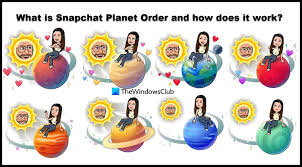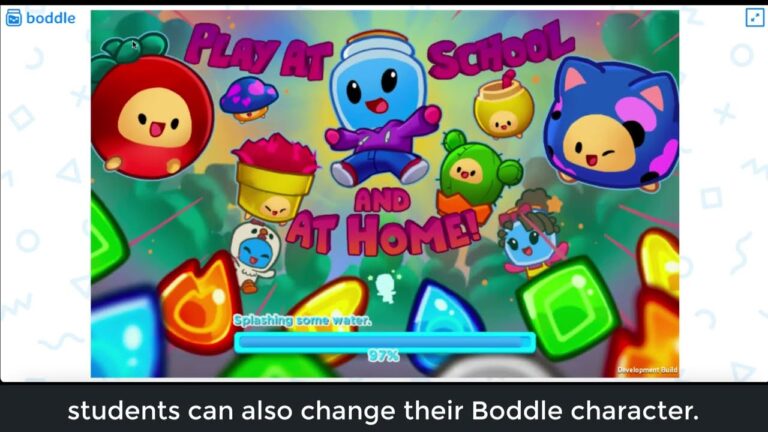Snapchat Planets: An In-Depth Look at Augmented Reality in Social Media
Introduction
Snapchat has long been at the forefront of integrating cutting-edge technology into social media experiences. Among its numerous innovations, Snapchat Planets represents one of the most captivating uses of augmented reality (AR). This feature not only entertains but also educates users by bringing the wonders of the universe right into their everyday lives. In this comprehensive article, we will explore Snapchat Planets in detail, examining how they work, their educational value, their impact on social interactions, and what the future might hold for this fascinating feature.
What are Snapchat Planets?
Snapchat Planets are part of Snapchat’s AR offerings, allowing users to interact with virtual representations of celestial bodies as if they were part of their physical environment. This feature leverages AR technology to overlay digital elements onto the real-world view captured by a user’s smartphone camera. By combining the realms of space and social media, Snapchat Planets offers a unique way to engage with both scientific content and interactive entertainment.
How Snapchat Planets Work
The Technology Behind Snapchat Planets
Snapchat Planets rely on advanced augmented reality technology to create a seamless blend between the virtual and physical worlds. Here’s a breakdown of the technology and processes involved:
- AR Filters and Lenses: Snapchat’s AR filters, known as lenses, are the gateway to experiencing Snapchat Planets. These lenses use complex algorithms to recognize and track the user’s surroundings in real-time. By tapping on the planet-themed filter, users can see virtual planets and celestial objects overlaid in their real-world environment.
- Real-Time Tracking and Interaction: The AR technology tracks the device’s camera feed to position and stabilize the virtual planets. This real-time tracking ensures that the digital objects remain anchored in the user’s environment, regardless of how they move. Users can interact with these virtual planets by rotating, resizing, or even moving them around, enhancing the sense of immersion.
- 3D Modeling and Rendering: Snapchat Planets are created using detailed 3D models and textures. These models are designed to mimic the appearance and characteristics of real celestial bodies, including their size, color, and surface features. The rendering process ensures that these models look realistic and blend seamlessly with the real-world view.
- Educational Content: Many Snapchat Planets filters include educational elements, such as facts about the planets, their orbits, and their composition. This feature helps users learn about space while enjoying the interactive experience.
Features and Benefits of Snapchat Planets
Enhancing User Experience
- Interactive Exploration: One of the main attractions of Snapchat Planets is the ability to explore and interact with virtual celestial bodies. Users can view planets from different angles, zoom in on details, and see how they would look in various settings. This interactive experience makes learning about space engaging and fun.
- Educational Value: Snapchat Planets are more than just a novelty; they offer real educational value. By providing information about the planets and other celestial objects, these AR experiences can spark interest in astronomy and space science. This educational aspect is particularly valuable for students and anyone interested in learning more about the universe.
- Social Sharing: Snapchat Planets are designed to be shared. Users can take screenshots or record videos of their interactions with virtual planets and share them with friends and followers. This social aspect adds a layer of enjoyment, allowing users to showcase their creativity and share their fascination with space.
- Creativity and Personalization: Snapchat encourages users to be creative with its AR features. Users can customize their virtual planets and incorporate them into their snaps and stories. This personalization adds a unique touch to each user’s experience, making it more memorable and engaging.
The Impact of Snapchat Planets
On Social Media and Engagement
- Boosting User Engagement: Snapchat Planets contribute to higher user engagement by offering an innovative and immersive experience. The novelty of interacting with virtual planets encourages users to spend more time on the app, exploring different filters and sharing their experiences.
- Promoting STEM Interest: By incorporating educational content into its AR features, Snapchat helps promote interest in science, technology, engineering, and mathematics (STEM). Snapchat Planets can inspire curiosity about space and encourage users to learn more about astronomy.
- Enhancing Brand Partnerships: Snapchat’s AR features, including Planets, provide opportunities for brand partnerships and collaborations. Companies and educational institutions can leverage these features to create branded experiences, educational campaigns, and interactive content that aligns with their goals.
Future Prospects of Snapchat Planets
Expanding AR Capabilities
As technology continues to advance, the future of Snapchat Planets looks promising. Here are some potential developments and trends to watch for:

- Enhanced Realism: Future updates may include even more realistic and detailed 3D models of celestial bodies. Improvements in AR technology could lead to more accurate representations of planets, stars, and other space phenomena.
- Broader Educational Integration: Snapchat could expand its educational content to cover a wider range of scientific topics. Collaborations with educational institutions and space agencies could lead to more in-depth and informative AR experiences.
- Increased Interactivity: Future versions of Snapchat Planets may offer more interactive features, such as virtual space missions, educational quizzes, and augmented reality space tours. These enhancements could provide users with a more immersive and engaging learning experience.
- Integration with Other Technologies: Snapchat may integrate its AR features with other emerging technologies, such as virtual reality (VR) and artificial intelligence (AI). This could lead to new and innovative ways of experiencing and learning about space.
Conclusion
Snapchat Planets represent a fascinating intersection of technology, education, and entertainment. By leveraging augmented reality, Snapchat has created an engaging platform that allows users to explore and interact with virtual celestial bodies. The combination of interactive exploration, educational content, and social sharing makes Snapchat Planets a unique and valuable feature for users interested in space and science. As technology continues to evolve, Snapchat Planets will likely see even more exciting developments, further enhancing the way we learn about and experience the universe.







